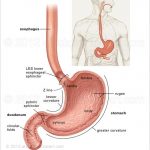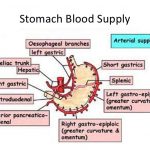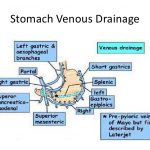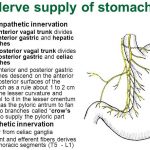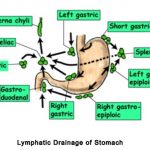The Stomach
The stomach is the first intra-abdominal part of the gastrointestinal (GI), or digestive, tract. It is a muscular, highly vascular bag-shaped organ that is distensible and may take varying shapes, depending on the build and posture of the person and the state of fullness of the organ (see the image below). The stomach lies in the left upper quadrant of the abdomen.
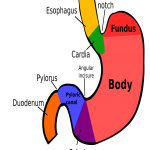 The stomach is divided into four sections, each of which has different cells and functions.
The stomach is divided into four sections, each of which has different cells and functions.
The sections are:
- Cardiac region, where the contents of the esophagus empty into the stomach;
- Fundus, formed by the upper curvature of the organ;
- Body, the main central region;
- Pylorus or atrium, the lower section of the organ that facilitates emptying the contents into the small intestine.
Two smooth muscle valves, or sphincters, keep the contents of the stomach contained:
- Cardiac or esophageal sphincter, dividing / separating stomach from esophagus.
- Pyloric sphincter or pyloric orifice, dividing / separating the stomach from the small intestine.
Function of the stomach
1) The stomach is J-shaped and it can expand to temporarily store food.
2) Partial digestion of the food takes place here. The churning action of the stomach muscles physically breaks down the food.
3) The stomach releases acids and enzymes for the chemical breakdown of food. The enzyme pepsin is responsible for protein breakdown.
4) The stomach releases food into the small intestine in a controlled and regulated manner.
